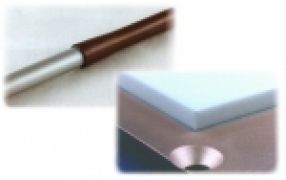SOLUTIONS & SERVICES
Solutions & Services
Dissimilar Materials Bonding

S-Bond can join a wide variety of materials, including aluminum, copper, stainless steel, refractory metals and ceramic to metal brazing with aluminum oxide, aluminum nitride, silicon carbide and other oxide, nitrides and carbides, and others. With this wide variety of materials joining capabilities, we receive many inquiries about aluminum soldering to stainless steel or aluminum oxide, graphite bonding to aluminum, titanium to silicon carbide, and similar applications where materials with widely varying thermal properties are to be joined. Low temperature bonding is ideal for this type of dissimilar materials bonding.
S-Bond solder bonding is a versatile lower temperature bonding process that is used in joining a range of metals, ceramics, glass and metal: ceramic composites. By definition, solders are joining filler metals that melt below 450°C. Solder bonding is typically used in the assembly of structures for its good thermal and electrical contact or for creating seals. The advantage of solder bonding stems from lower temperature exposure (less that 400°C), compared to brazing when joining thermally sensitive materials. Alternatively, compared to bonding with epoxy adhesives, solder bonding is a more conductive bond, but does require higher temperature exposure and the wetting of the molten metal to the bonding surfaces.
Contact Us to discuss how S-Bond’s assembly solutions for dissimilar materials can be used in your application. Also see our Technology and Application Whitepapers and Blog for additional articles on dissimilar materials bonding.
More Information?
If you would like someone to contact you or provide information, please submit the information to the right.
